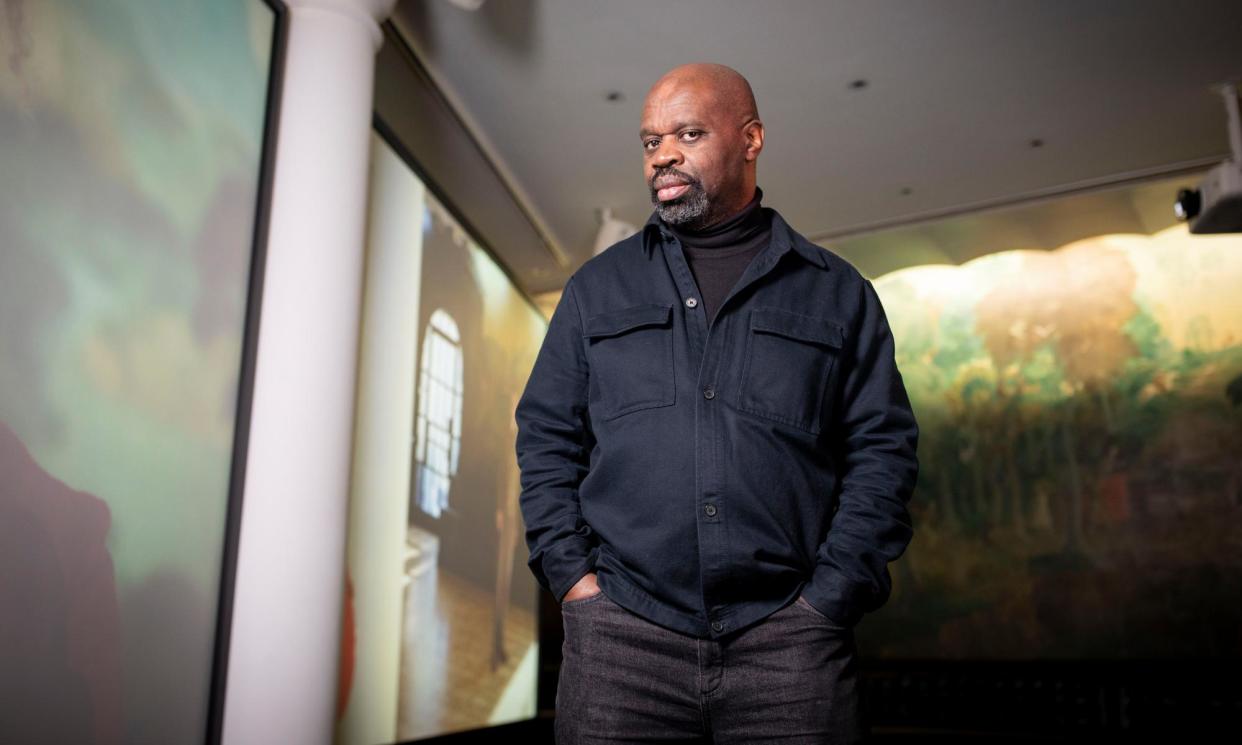Artist defends Tate Britain’s display of ‘undeniably racist’ Whistler mural

An artist commissioned to respond to a mural in Tate Britain that has been sealed off from the public since 2020 because of its depictions of black and Chinese people, says viewing traumatic and racist images is crucial for us to truly grapple with our history.
Keith Piper was commissioned by Tate Britain in 2022 to create a work that reacted to the Rex Whistler mural, titled The Expedition in Pursuit of Rare Meats, which had been closed after Tate’s ethics committee decided it was “offensive”.
Piper defended the decision to keep the mural – which is almost 100 years old, grade-1 listed and will be restored to view on Tuesday 12 March – rather than remove it, arguing it is “important to look at historical depictions in order to understand history”.
He said: “I know there is an argument among young people now that these images retraumatise, but I think we either look or forget. We are very good at forgetting nowadays and things that are out of sight go out of mind. To keep a clear sense of history we need to see these things.
“We need to recognise the importance throughout black struggles, the importance of difficult images. If we go back to the struggle against apartheid, the very graphic and traumatising video of George Floyd during Black Lives Matter, his life coming out of his body. And without that very problematic image it is questionable whether or not without that the movement would have had the same momentum, same with the civil rights images.”
The Rex Whistler mural had caused Tate Britain a headache for more than a decade, after visitors first raised concerns over the images of a black child being enslaved and his mother, who is shown naked and in a tree, while the work also contains offensive caricatures of Chinese people.
The original mural was commissioned in 1926 as “decoration for the new refreshment room”, taking Whistler 18 months to complete when he was a 21-year-old artist who’d recently graduated from Slade.
Piper, who emerged during the British Black Arts movement of the early 1980s, decided to create Viva Voce – a 20-minute video piece in which Whistler is interrogated about his work by a fictional academic called Professor Shepherd.
In a two-screen video piece, the pair discuss not only the mural but Whistler’s social circle, which included Stephen Tennant and the “Bright Young People”, who hung out at the Gargoyle Club where black musicians played during the Jazz Age.
Whistler’s constant use of racist images of black people in his work is interrogated as is his connection to Edith Olivier, the literary figure who befriended Whistler and produced a pamphlet that explained the ideas behind the mural and was part of the basis for Piper’s response.
It has been inaccessible to the public since 2020 when the Rex Whistler Restaurant it occupied was shuttered during the pandemic and has not subsequently reopened.
Just before its closure a sign claiming the restaurant was “the most amusing room in Europe” was removed. Tate was also criticised for taking five years to put up new signage acknowledging the offensive elements of the mural in 2018, despite the fact initial concerns were raised in 2013.
Piper said the mural, which wraps around the entire space, is “undeniably racist” and acknowledged he expects criticism from “a very vocal group of people who say work like this should not be on display [and] another group who would say ‘leave our heritage alone’”.
But the artist, who was a member of the Blk Art Group, argues that in the age of artificial intelligence, we need to see real historical images – however difficult – more than ever. “Having the historical artefact itself is becoming more important because of how much is fabricated by AI,” said Piper.
“We’re confronted with all these items that give us a fabricated sense of history so it’s more important to be able to go back to the actual historical archive in order to then inform our judgment and our research.”
Piper said he enjoyed the work because it involved historical enquiry, which has been a constant part of his practice for four decades. But he described the commission as like “being approached by the Tate and them saying there’s a foul smell coming from the basement and I’m the plumber, the person who can stick his hand down the u-bend and grasp it, pull it out and say ‘that’s what it is’”.


